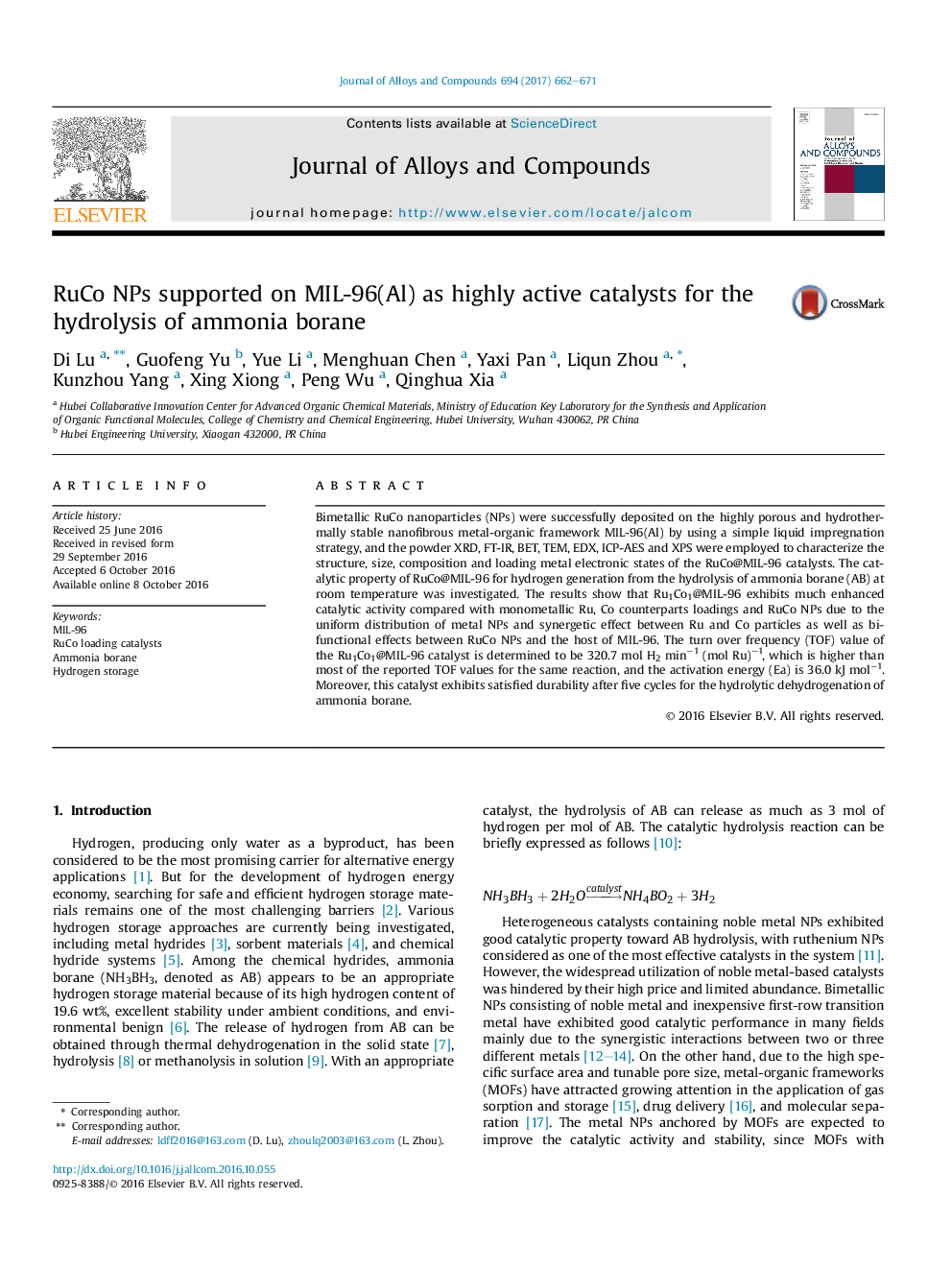| Article ID | Journal | Published Year | Pages | File Type |
|---|---|---|---|---|
| 5460956 | Journal of Alloys and Compounds | 2017 | 10 Pages |
â¢RuCo@MIL-96 catalyst was synthesized and applied to the catalytic hydrolysis of AB.â¢Ru1Co1@MIL-96 exhibits an excellent catalytic performance for the hydrolysis of AB.â¢High catalytic activity owes to bimetallic synergistic and bi-functional effects.â¢RuCo@MIL-96 catalyst is a promising candidate using as hydrogen storage material.
Bimetallic RuCo nanoparticles (NPs) were successfully deposited on the highly porous and hydrothermally stable nanofibrous metal-organic framework MIL-96(Al) by using a simple liquid impregnation strategy, and the powder XRD, FT-IR, BET, TEM, EDX, ICP-AES and XPS were employed to characterize the structure, size, composition and loading metal electronic states of the RuCo@MIL-96 catalysts. The catalytic property of RuCo@MIL-96 for hydrogen generation from the hydrolysis of ammonia borane (AB) at room temperature was investigated. The results show that Ru1Co1@MIL-96 exhibits much enhanced catalytic activity compared with monometallic Ru, Co counterparts loadings and RuCo NPs due to the uniform distribution of metal NPs and synergetic effect between Ru and Co particles as well as bi-functional effects between RuCo NPs and the host of MIL-96. The turn over frequency (TOF) value of the Ru1Co1@MIL-96 catalyst is determined to be 320.7Â mol H2 minâ1 (mol Ru)â1, which is higher than most of the reported TOF values for the same reaction, and the activation energy (Ea) is 36.0Â kJÂ molâ1. Moreover, this catalyst exhibits satisfied durability after five cycles for the hydrolytic dehydrogenation of ammonia borane.
Graphical abstractHydrogen generation rate from the hydrolysis of AB: different Ru, Co based catalysts.Download high-res image (149KB)Download full-size image
